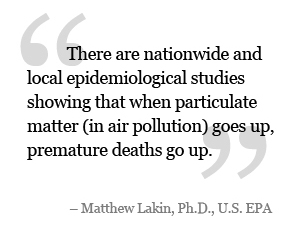A Lack of Natural Gas Service is No Longer an Excuse for Wood Burning
Many rural areas in the US still lack natural gas service, and these areas often have the highest rates of residential wood burning (and the highest wintertime air pollution).
The reliance on wood burning for home heating in these areas is rationalized on the basis that the cost of electric heat or propane is too expensive. This rationale has even held sway with air quality regulators, who have exempted areas not serviced with natural gas from wood burning restrictions on days when the air quality is poor or predicted to be poor (see, for example, the policies of the San Joaquin Valley and the San Francisco Bay Area Air Districts).
But now, thanks to advances in technology, heating a home with an electric split ductless heat pump is cheaper than heating with natural gas (see here, here, and here). Sensiblenergy.com provides a detailed four-part comparison of the cost of heating a moderate-sized house in Portland, Oregon using gas vs. oil vs. electricity. (Part 4 is here with links to the other parts.) The conclusion? Using a split ductless heat pump is the cheapest of these options.
Split ductless heat pumps are extremely efficient because they move heat from one place to another rather than generating heat from energy. (A more detailed explanation of how they work can be found here.) Installation does not require ductwork, which can be expensive and difficult to put in. In fact, the cost to purchase and install a split ductless unit is comparable to the purchase and installation of a wood stove. Note that these units can cool as well as heat–try doing that with a wood stove.
Wood burning is one of the most damaging activities an individual can do in terms of the impact on the health of their neighborhood. Now there’s one less excuse for doing it.




